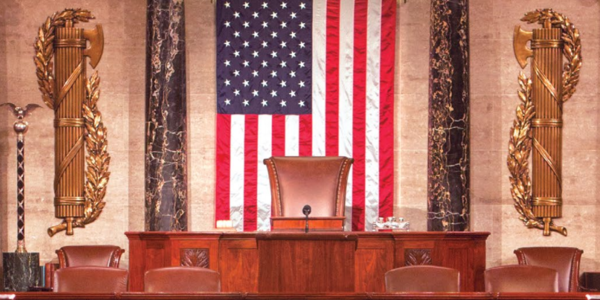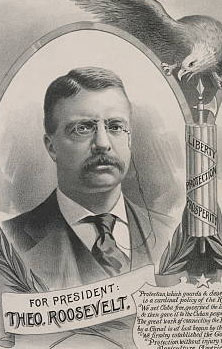
In March of 1919, newspaper editor Benito Mussolini founded the Partito Nazionale Fascista with a group of fellow veterans. They took as their symbol the Roman fasces. That bundle of rods with an axe attached was created on the Italian peninsula thousands of years before. In 1919, it was universally recognized as symbol of democratic governance born of the Roman Republic.
Our own American republic embraced the fasces (FASH-ease) well before Mussolini monopolized it. You can find two of them behind the Speaker’s podium in the House of Representatives. U.S. Mercury dimes (1916-1945) have a fasces on the reverse side. Teddy Roosevelt used the fasces on some of his campaign posters back in 1904. Shouldn’t we be proud that this Italic symbol was carried over to these shores? Absolutely! But don’t pin one on your lapel or cap. Not only is the fasces now taboo but the word and its derivatives – fascist, fascistic – can bring you a world of grief.

with fasces

The fasces is definitely unique as symbols go. Evidence points to the Romans adopting it from the Etruscans as a symbol of authority. Back then, state-inflicted corporal punishment ran the gamut from flogging to crucifixion. The bundle of rods represented flogging – “Spare the rod, spoil the child.” A bundle of them could handle more than one offender. The axe was for capital punishment of Roman citizens – a quick beheading. Crucifixion was for non-citizens, a torment the Romans adopted from the Semitic Carthaginians. So, the pagan Romans identified with the fasces while the Christians adopted the cross.
Some narratives interpret the bundle of rods as a symbol of unity – strength in numbers. You may break one rod but never a tight bundle of them. This is the American interpretation. You’ll see two fasces without the axe at the Lincoln Memorial, and on pre-1998 quarters being held by an eagle. However, Roman officials clearly meant to intimidate the population by assigning a number of fasces according to rank. In public, an official would be accompanied by a bearer (lictor) carrying one fasces. The emperor had 24 lictors, a consul (prime minister) 12, a praetor (vice consul) 6, a legate (adjutant) 5, and a priest 1. The message: the higher his rank the more punishment he could mete out. (Mussolini was once photographed in Africa on horseback with only two lictors – he was being modest!)


Mussolini not only adopted the word fasces but also lictor. While Hitler spoke of his “Third Reich” (Empire), Mussolini labeled his Fascist regime the Littorio – the bearer of the reborn Roman Empire. A triple fasces become the standard Italian Air Force insignia and a battleship was christened Littorio in 1934. The Littorio survived the war, unlike Mussolini.
Whether controversial or not, we shouldn’t forget the symbols that bear witness to our heritage. -JLM

it is interesting too, how classical symbols played such a part in American political life, including the now probably controversial E Pluribus Unum ……